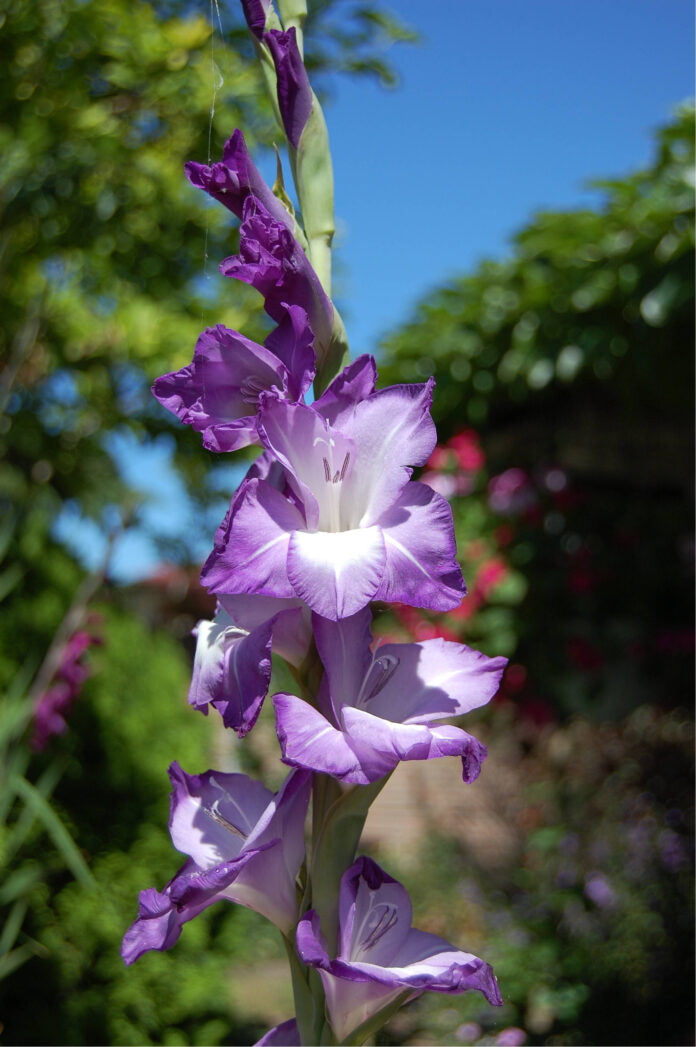by Mark and Ben Cullen
Most Canadians are not very motivated to go to a retail garden centre this time of year. We are good at arriving at our favourite garden store when the sun is shining, the earth is beckoning us, and all of our neighbours are shopping on the same day.
However, if you mosey into any full-service garden retailer now or go online to review their current offering, you will likely find a wide selection of summer flowering bulbs. Many are a mystery to the average gardener: why are they for sale now? How will they perform in my garden come spring/summer? What will I do with them if I buy them now?
Here are our top 7 tips for great summer flowering bulbs.
- Do not confuse them. Summer flowering bulbs, like dahlias and canna lilies, are not spring flowering bulbs, as in daffodils, tulips and crocus. The former is frost tender and cannot be left in the ground all winter where they will rot. The latter are planted in the fall or you plant the potted, forced version in the garden come spring, which is expensive and inconvenient.
- Start now. We are planting up our dahlia roots/tubers in one-gallon size pots and placing them in the sunniest window in the house in early March. We have a sliding glass door that faces south and west for best exposure. Stepping over these pots to open the door is a minor nuisance and overcome with the odd swear word. Nothing serious. Tuberous begonias can be started any time now. They require special treatment, by giving them a “half screw” into pure, damp, peat moss or seed starting mix in a seed starting tray. We start ours on the top of the refrigerator where there is even, ambient heat: they are a warm season crop. After about four to six weeks, remove them from the tray, hairy roots and all, and plant into four-inch pots. Finish them in a sunny window or under grow lights until planting time in late May.
- Start later. Summer flowering canna lilies (which are not lilies but members of the Zingiberales family, along with bananas and bird of paradise) are best started in late March or early April. Start them earlier and you might have giant, top heavy plants taking over your kitchen before you are able to plant them in the garden in late May. We use a loose premixed potting soil and large, two-gallon pots.
- Start directly in the garden. Gladiolas are best saved until early May when they are planted directly in the garden. They have a rather deliberate, upright look so we keep them in the background of our sunny borders or lined out like soldiers in the veggie garden. Great as cut flowers which are edible (the flower petals), so plan on livening up summer salads with excess flowers from your glads.
- Buy now. Recently, we advised readers to buy garden seeds early this year to avoid disappointment. Last year at this time, many Canadian gardeners stormed the seed racks and online retailers and cleaned them out of inventory early. The same might happen with summer flowering bulbs. When you bring them home, store them out of direct sunshine and in a cool room. The basement or a refrigerator is a good location until you plant them.
- Store them. Want to save money? Come late fall, around Thanksgiving, use a garden fork to remove the mature roots of your summer flowering bulbs. Cut the tops off, leaving a stem about 15 cm long. Allow them to dry in the sun for a couple of days and store in a paper bag filled with dry peat moss or dry potting soil until you are ready to plant the following winter/spring. Many bulbs, tubers and rhizomes grow so large that you can divide them and share with friends, family, and neighbours. Give them a copy of this article too.
- Enjoy them. Take pictures when in bloom, enjoy the pollinators they attract, cut them and bring indoors for the table. They will fill a room with joy.
Mark Cullen is an expert gardener, author, broadcaster, tree advocate and Member of the Order of Canada. His son Ben is a fourth-generation urban gardener and graduate of University of Guelph and Dalhousie University in Halifax. Follow them at markcullen.com, @markcullengardening, and on Facebook.


